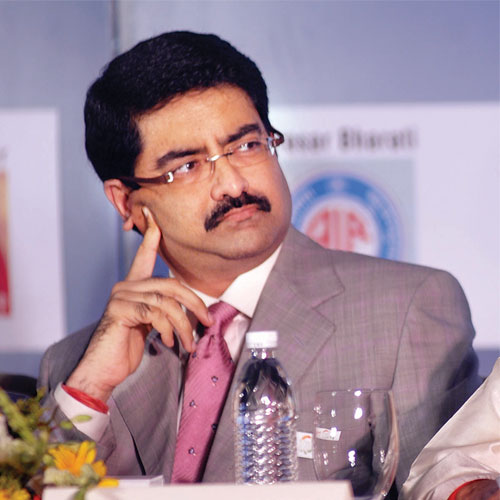Drug maker Wockhardt on Thursday made a precautionary recall of five over-the-counter (OTC) medicines in the UK on Thursday following the withdrawal of good manufacturing practices (GMP) certificate for its Chikalthana, Aurangabad, unit last week.
After this, the UKMHRA directed pharmacies, dispensing clinics and wholesalers to return five different prescription-only medicines manufactured by the pharma company.
Among medicines recalled four are for pain relief – Amiloride HCl 5mg tablets, Clarithromycin 250 /500 mg tablets, Gliclazide 80mg tablets, Quinine Sulphate 300mg tablets and Tamsulosin Pinexel 400mcg capsules – while Gliclazide 80mg tablets is for Type 2 diabetes.
According to the drug regulator, the products were tested on importation and Qualified Person (QP) released and that there is no evidence of a risk to patient safety from products currently in the UK market.
“However, it is considered that the products have not been manufactured in line with GMP requirements. People do not need to return their medicines because there is no evidence that the medicines affected by the precautionary recall in the UK are defective. Therefore, it’s important that people continue to take their medicines as prescribed,” Gerald Heddell, MHRA’s director of inspection, enforcement and standards said in a statement.
In a communication last week, UKMHRA had told Wockhardt that it was replacing its GMP certificate to the Chikalthana facility with a restricted GMP certificate, allowing it to manufacture only critical medicines.
The new certification permits continued manufacturing and quality control testing of “critical” products in situations where it has been agreed by the national competent authority or European Medicines Agency that there is no feasible alternative in the market concerned, Wockhardt had said last week.
Accordingly, 10 prescription-only medicines, UKMHRA said on Thursday, can continue to be made at the Chikalthana site and still be supplied to patients in the UK.
“This is because due to concerns over the continuity of supply, the benefits to patients of continuing to take these medicines outweigh the risk from any quality concerns with the medicine,” the UK regulator said.
The UKMHRA’s restricted GMP certification was seen as marginally positive for Wockhardt in terms of revenue and stock performances. However, the scrip has fallen 10% this week after withdrawal of the certification.
During an inspection at Wockhardt’s Chikalthana unit in July, the UKMHRA had identified manufacturing deficiencies, including poor record keeping relating to the manufacture and testing of the medicines made at the site, and inadequate validation and production controls for medicines.
Earlier in July, the UKMHRA had passed a similar stricture involving 16 medicines against Wockhardt’s Waluj, Aurangabad, site.
After this, the UKMHRA directed pharmacies, dispensing clinics and wholesalers to return five different prescription-only medicines manufactured by the pharma company.
Among medicines recalled four are for pain relief – Amiloride HCl 5mg tablets, Clarithromycin 250 /500 mg tablets, Gliclazide 80mg tablets, Quinine Sulphate 300mg tablets and Tamsulosin Pinexel 400mcg capsules – while Gliclazide 80mg tablets is for Type 2 diabetes.
According to the drug regulator, the products were tested on importation and Qualified Person (QP) released and that there is no evidence of a risk to patient safety from products currently in the UK market.
“However, it is considered that the products have not been manufactured in line with GMP requirements. People do not need to return their medicines because there is no evidence that the medicines affected by the precautionary recall in the UK are defective. Therefore, it’s important that people continue to take their medicines as prescribed,” Gerald Heddell, MHRA’s director of inspection, enforcement and standards said in a statement.
In a communication last week, UKMHRA had told Wockhardt that it was replacing its GMP certificate to the Chikalthana facility with a restricted GMP certificate, allowing it to manufacture only critical medicines.
The new certification permits continued manufacturing and quality control testing of “critical” products in situations where it has been agreed by the national competent authority or European Medicines Agency that there is no feasible alternative in the market concerned, Wockhardt had said last week.
Accordingly, 10 prescription-only medicines, UKMHRA said on Thursday, can continue to be made at the Chikalthana site and still be supplied to patients in the UK.
“This is because due to concerns over the continuity of supply, the benefits to patients of continuing to take these medicines outweigh the risk from any quality concerns with the medicine,” the UK regulator said.
The UKMHRA’s restricted GMP certification was seen as marginally positive for Wockhardt in terms of revenue and stock performances. However, the scrip has fallen 10% this week after withdrawal of the certification.
During an inspection at Wockhardt’s Chikalthana unit in July, the UKMHRA had identified manufacturing deficiencies, including poor record keeping relating to the manufacture and testing of the medicines made at the site, and inadequate validation and production controls for medicines.
Earlier in July, the UKMHRA had passed a similar stricture involving 16 medicines against Wockhardt’s Waluj, Aurangabad, site.


 Three days after the CBI lodged a case against Kumar Mangalam Birla in connection with the coal scam, the industrialist met Union finance minister P Chidambaram and top finance ministry officials, including revenue secretary Sumit Bose, in Delhi on Friday.
Three days after the CBI lodged a case against Kumar Mangalam Birla in connection with the coal scam, the industrialist met Union finance minister P Chidambaram and top finance ministry officials, including revenue secretary Sumit Bose, in Delhi on Friday.

 The capex investment target for 17 central public sector enterprises was set at Rs 141,389 crore in 2012-13, of which these units made an actual investment of Rs 1,11,913 crore, almost 80 per cent of the goal. Even then, the country’s economic growth declined to five per cent in 2012-13, lowest GDP expansion in 10 years. This year, most independent analysis did not expect the economy to grow even this much. The economy expanded 4.4 per cent in the first quarter of 2013-14, slowest in four years.
The capex investment target for 17 central public sector enterprises was set at Rs 141,389 crore in 2012-13, of which these units made an actual investment of Rs 1,11,913 crore, almost 80 per cent of the goal. Even then, the country’s economic growth declined to five per cent in 2012-13, lowest GDP expansion in 10 years. This year, most independent analysis did not expect the economy to grow even this much. The economy expanded 4.4 per cent in the first quarter of 2013-14, slowest in four years.